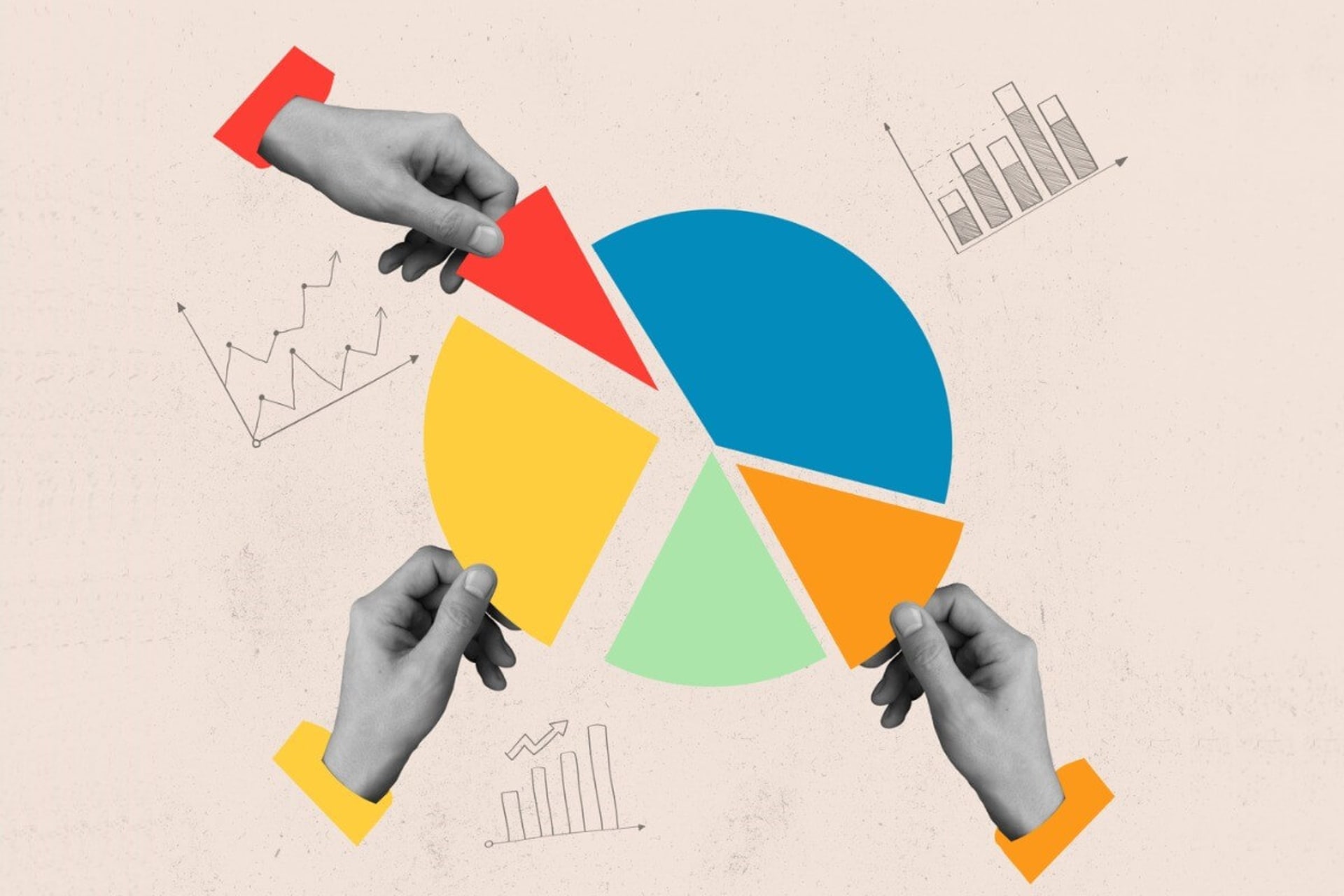Wherever you look, everyone is talking about data. Become a data-driven company! Foster a data-positive culture! Embrace AI and data-based decision-making! It’s as if everyone has suddenly realized the power of data. And there’s a good reason for that: data is a powerful tool. We wouldn’t have the technological advancements we have today if scientists hadn’t been gathering data for over 300 years to prove their theories.
When used wisely, data has the power to drive decision-making, impact strategies, improve performance, and prepare companies for unforeseen events. In one survey, 56% of companies that adopted data-forward policies said that data analytics was instrumental in their growth. Alongside faster decision-making, other benefits cited include:
- Improved efficiency and productivity
- Better financial performance
- Identification and creation of new products
- Improved customer acquisition and retention
- Better customer experiences
- Competitive advantage in contrast to other market competitors
How can you harness the many benefits of data analytics? How can you improve your efficiency and foster growth in your company? The answer is learning to analyze data effectively. Here, we’ll take a look at the 4 main types of data analytics you should be using in your business today.
What Is Data Analytics?
Data analytics is the practice of examining data to answer questions, identify trends, predict outcomes, gather insights, and make decisions. When this kind of analysis is used in business it’s often called business analytics.
To be fair, neither data analysis nor business analytics is actually new. As mentioned before, scientists have been doing it for centuries. In the past, guilds and traders understood the value of tracking their transactions quantitatively. There is a reason why even at the tail end of the medieval age math-savvy scholars were highly sought after by the rising merchant class.
Nowadays there are literally thousands of products on the market to help companies gather and process data. Google Forms, Survey Monkey, Microsoft Excel, Power Bi, Infogram, Data Wrapper, Tableau, and SPSS are just some of the most common examples.
With these tools, you can approach data from different angles, draw conclusions and create user-friendly visualizations as well as storylines to share with all the members of a company.
And then there’s Python. It’s no secret that one of the biggest reasons why Python has become such a successful programming language is the massive support for data processing in tandem with a user-friendly syntax.
If we add on top the language support for powerful algorithms, machine learning, and big data, we have all the tools to gather, sort, and analyze incredibly high volumes of information at a speed unmatched by the human mind.
While it may be hard to believe, data analysis has never been as approachable and friendly as it is today. Anyone with a bit of statistics knowledge can pull off some amazing feats that would have required many hours of work and coding in the past.
A Word of Caution
Before we delve deeper into the world of data analytics, it’s very important to remember 2 core principles of data analysis:
Garbage in, Garbage Out
Perhaps the most important principle in data analysis says that if your data is bad your outcome will be bad.
Bad data can emerge for any number of reasons, including biases, computer errors, insufficient sample sizes, missing information, and so on. Whatever may be the case, the end result is the same—unreliable results.
Complex Systems are Unpredictable
Even our most reliable models can fail to predict an outcome. For example, over the last few years, we had to cope with a pandemic, a severe drought that caused a chip shortage, and a blockade of one of the most important maritime canals on the planet.
The end result? An unstable market that is proving very hard to control. The moral here is that data analysis can fail, and we have to be prepared.
Having said that, how can data analysis help us grow?
What Are the 4 Types of Analytics?
Data analysis can be organized into 4 broad categories depending on their scope, reach, and expected outcome. While some of these types can be considered “more powerful” than others, they all have a role to play in business analytics.
Those categories are as follows.
Descriptive Analytics
Descriptive analytics is the simplest form of analysis, and it’s the foundation for the other types. As the name implies, it’s a series of techniques that help us describe the nature of our data. In other words, with descriptive analysis, we can see what has already happened.
For example, imagine going over your sales data and finding a sudden spike in demand for one of your products. With descriptive analytics we can see when that spike started, when was the highest demand, when demand waned, and if you had inventory to meet demand.
Consider Netflix as a concrete example of descriptive analytics. Based on the in-app information the provider gathers, it provides a curated list of titles the user might enjoy and improves recommendations as it views the user’s interactions.
At this stage we don’t find the reason why things happen, we only describe events. Graphs, charts, and other image-based data visualization techniques are perfect for descriptive analytics since they help get the point across quickly.
Diagnostic Analytics
After knowing what happened, most of us will be interested in figuring out “Why something“ happened. That’s what diagnostic analytics are for.
With diagnostic analysis, we take a step further, comparing and contrasting variables to uncover correlations (or to corroborate our hunches). In the best of cases, we can find causal relationships, which will become very useful later.
Continuing with our previous example, once you start going over the data you realize that the aforementioned spike happened in tandem with a new marketing strategy that targeted a different demographic. Once you parse your clients, you find a correlation between the age of the consumers and their interest in the product.
After gathering a bit more data you find an answer: younger clients prefer the sleeker design of the product, while older clients prefer their traditional solution. In other words, the spike in sales came from an expansion into a new younger market.
Diagnostic analytics can help us discover information about the market as well as our inner workings, diagnosing our current issues and pointing to their probable cause.
Predictive Analytics
Knowing why something happens is important, but futile unless we can do something about it. With knowledge comes prediction, and with prediction comes control.
Predictive analytics is used to make predictions about the future. It answers the question, “If things follow this trend what will happen in the future?”
Here is when casual relations come into play. If we can reliably know that correlated variables happen in a timeline and that the later variables only change when former variables change, then we can make an educated guess of what’s going to happen if we change the first variables.
For example, let’s say that you want to try to predict the price of a certain product, and you know for a fact that the price is tied to the cost of its raw materials. With a linear regression on past data, you may find that for each 1/5th increase in the cost of the raw materials, the product price increases in half.
So now you know that if the raw material costs X, then the product will cost Y.
Knowing this kind of information helps organizations formulate strategies based on likely scenarios.
Another example is financial forecasting, where analytics use predictive analytics to anticipate organizations’ financial health.
Prescriptive Analytics
Finally, prescriptive analytics answers the question, “What should we do next?”
Prescriptive analytics takes into account all possible variables and suggests courses of action. This type of analytics can be especially useful when making decisions.
It’s a bit like a roleplaying game. Using the available data you create a series of fictional scenarios and try to predict the outcomes of each one. You then make an educated guess based on previously established criteria.
Going back to our previous example, should you buy the raw materials and make the product? If so, how much should you invest? What is the potential ROI of each scenario? By creating different hypothetical cases and playing out the outcomes you can answer these questions.
Or, think about lead scoring, where specialists assign values to different consumers or prospective customers through information like email interactions and engagements. Through prescriptive analytics, businesses can assess the user’s likelihood of making a purchase or otherwise engaging with the organization.
Predictive analytics can be done manually, but it’s a time-consuming and very complex process, which is why it’s often best relegated to machine learning algorithms that can process hundreds of scenarios in a fraction of the time.
How To Use the 4 Types in Your Business
As you can see, data analytics is a passionate field full of opportunities. It’s demanding, and it takes a lot of creativity and effort, but the outcomes are worth it. The best way to make the most out of your data is to foster a data-driven culture.
Use data scientists to gather and analyze data, train your team to understand the basics of data analytics, and ask the right questions. Understand the limits of both the techniques and your data.
Most important of all, remember that data analytics isn’t magic. There are limits to what you can achieve with it. However as we’ve already shown, there is a lot to gain by working within those limits. That explains why everyone is recommending data analytics—and why you should embrace it, too.






